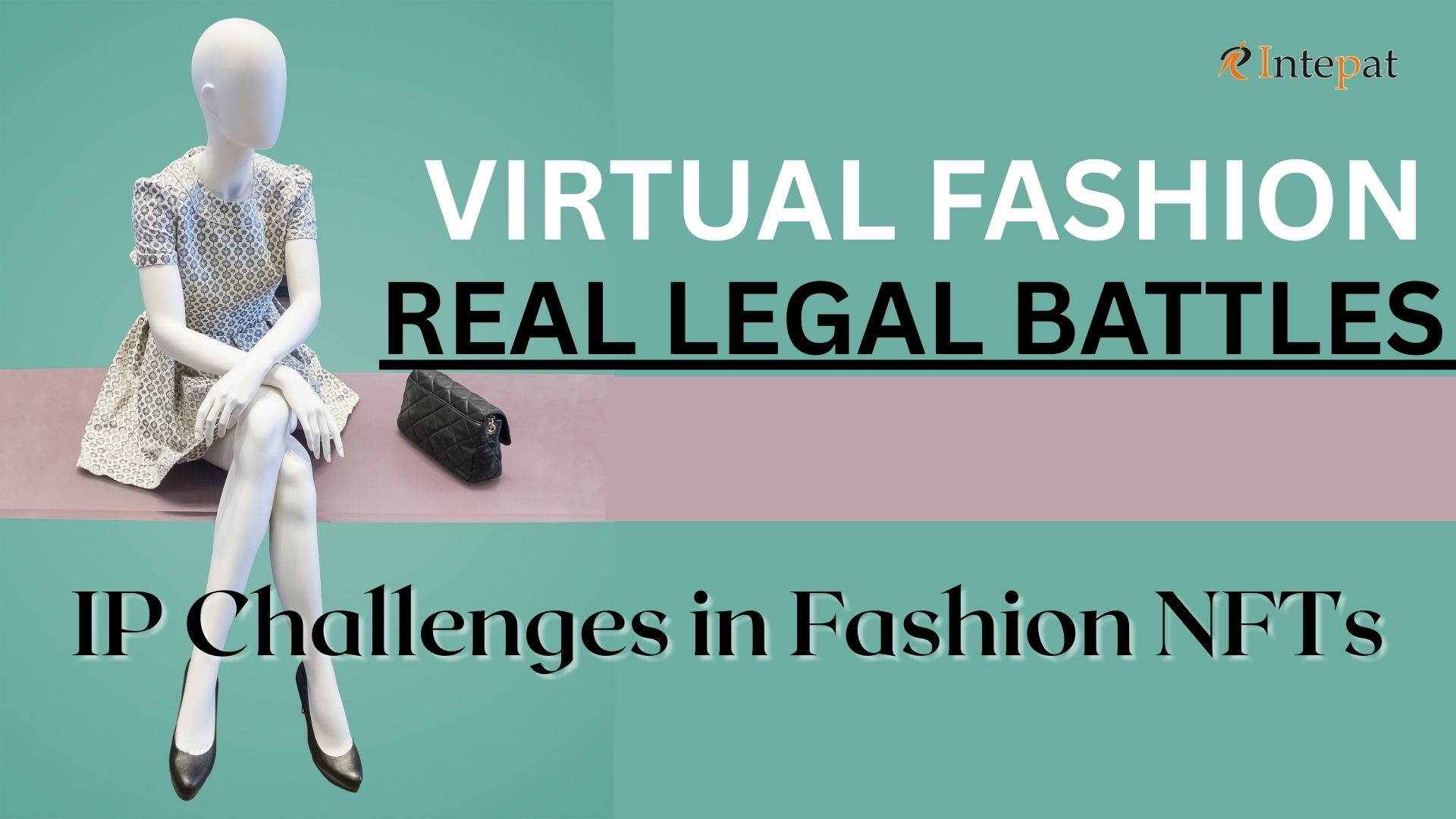INTRODUCTION
The fashion industry, celebrated for its artistic expression and creativity, has recently ventured into the digital frontier through Non-Fungible Tokens (NFTs). NFTs, a form of blockchain-based digital assets, have opened unprecedented avenues for creativity and commerce. However, their rapid rise has also resulted in unique and complex legal disputes within the fashion industry. These disputes revolve around issues of copyright infringement, trademark violations, and ownership of digital assets, presenting novel challenges to intellectual property (IP) law.
NFTs in fashion are reshaping traditional notions of creativity and commerce, yet they expose gaps in the existing legal frameworks. The growing reliance on NFTs necessitates careful evaluation of their implications, not just for creators and brands, but also for consumers and regulators navigating this uncharted territory. Balancing innovation with ethical and legal considerations has become imperative in addressing these disputes.
The Intersection of Fashion and NFTs
The fashion industry’s adoption of NFTs has transformed how brands and creators interact with consumers. By converting exclusive or trademarked designs into NFTs, fashion houses are selling virtual garments, collectibles, and even experiences, blurring the lines between physical and digital realities. Virtual fashion shows, augmented reality (AR) wearables, and tokenized exclusivity have captivated tech-savvy consumers, making NFTs a valuable revenue stream for fashion brands.
Financially, NFTs have become a valuable revenue stream for fashion brands, enabling them to monetize digital assets while bypassing the production costs and supply chain complexities of physical goods. The transparency of blockchain also ensures authenticity, helping to combat counterfeiting, a persistent issue in the industry. However, despite these benefits, the tension between the industry’s digital innovation and the legal frameworks necessary to protect creative ownership is evident.
Copyright Infringement in Fashion NFTs
Copyright infringement is one of the most controversial legal issues stemming from NFTs in the fashion industry. Designers and brands have frequently found their original creations tokenized and sold by unauthorized individuals or entities. Unlike traditional IP violations, where the physical reproduction of a design is at stake, NFTs involve the unauthorized tokenization of the creative concept itself.
One notable example is the case of unauthorized NFT minting of fashion sketches. Designers often share illustrations and concepts online, but blockchain-based platforms have facilitated the illicit conversion of these sketches into NFTs, without crediting or compensating the original creators/copyright holders. Since blockchain technology permanence of NFTs, it is almost impossible to rectify such infringements after the NFT is minted.
Trademark Violations and Brand Identity
Trademark violations have emerged as a significant legal challenge within NFT-based fashion disputes. As trademarks play a vital role in protecting a brand’s identity and reputation, the unauthorised use and spread of counterfeit NFTs mimicking logos and designs of luxury fashion brands has posed severe enforcement dilemmas. These unauthorized tokens are fraudulent digital products which compromise brand integrity and confuse consumers.
For instance, counterfeit NFTs frequently replicate the logos, designs, or brand names of established fashion houses, thereby eroding the value of the original brand. This not only misleads buyers but also raises serious concerns regarding accountability and legal recourse.
Beyond financial losses, trademark violations pose reputational risks. Unauthorized NFTs of a brand may diminish consumer trust, especially if these tokens are linked to poor-quality designs or controversial content. In order to overcome these issues, several fashion houses have turned to proactive measures. Many have launched their own verified NFT collections to establish digital authenticity and counter the spread of counterfeits.
Case Studies
Hermès v. Mason Rothschild
One of the most prominent NFT-related legal disputes in the fashion industry involves luxury brand Hermès and digital artist Mason Rothschild. Rothschild created and sold NFTs known as “MetaBirkins,” which depicted digital fur-covered versions of Hermès’ iconic Birkin bags. Hermès filed a lawsuit alleging trademark infringement, arguing that the MetaBirkins NFTs violated their brand identity and consumer trust.
Rothschild countered by claiming that the MetaBirkins were a form of artistic expression protected under free speech. However, the court sided with Hermès, emphasizing that the MetaBirkins NFTs could mislead consumers into believing they were associated with the luxury brand. This case highlights the complexities of trademark law in the NFT ecosystem, where artistic freedom often clashes with brand protection.
The outcome underscores the importance of trademark enforcement in safeguarding brand reputation, particularly in an era where digital assets are increasingly intertwined with physical products. Hermès’ victory sets a significant precedent for other fashion brands seeking to protect their trademarks in the NFT realm.
Nike v. StockX
In February 2022, Nike initiated legal action against StockX, a sneaker and streetwear marketplace, accusing them of trademark infringement, trademark dilution and unfair competition. In its lawsuit, Nike alleges that StockX has been offering for sale, NFTs which prominently featured Nike’s trademarks including the iconic Swoosh logo. Nike claims that StockX has been leveraging the brand’s reputation to market and sell their unauthorised NFTs at inflated prices, misleading consumers into believing that the NFTs are official or authorised by Nike. However, Nike states that it had not approved or participated in the creation or sale of these NFTs at any stage. Since filing the case, Nike has expanded the charges filed to include claims of counterfeiting and false advertising.
Nike’s lawsuit highlights the urgent crisis which is growing due to the decentralised and unregulated nature of the NFT ecosystem. Brands such as Nike are facing unprecedented challenges in safeguarding their trademarks and even maintaining control over their digital representation. This case demonstrates the risks posed by unauthorised NFTs to capitalise on a brand’s identity and also mislead consumers. Thus, it emphasises on the need for fashion brands to take proactive measures in order to protect their trademark and brand identity in the digital space.
Inadequacies of Existing Legal Frameworks
The existing legal frameworks governing IP rights are inadequate to address the unique challenges posed by NFTs in the fashion industry. Traditional copyright and trademark laws, designed for tangible goods, do not accommodate the intangible nature of digital assets. Furthermore, legal definitions of ownership and infringement are not uniformly established across various national jurisdictions, creating uncertainties for stakeholders.
While some countries have begun to adapt to technological developments in IP, the pace of legal reform lags behind the rapid evolution of NFTs. For example, U.S. courts have applied existing copyright laws to NFT disputes, but the lack of specific precedents limits their effectiveness. Similarly, the European Union’s copyright directives do not explicitly address blockchain-based assets, leaving critical gaps in enforcement.
The absence of standardized regulations also complicates cross-border disputes, as seen in cases involving counterfeit NFTs sold in international markets. Without harmonized legal frameworks, addressing these disputes requires navigating complex jurisdictional hurdles that deter creators and brands from pursuing claims.
The Path Forward
There is an urgent need to address these challenges through global cooperation and standardized regulations across jurisdictions. Multilateral treaties and international agreements could pave the way for harmonized IP frameworks tailored to suit the unique requirements of blockchain-based assets. Such measures would streamline enforcement, reduce jurisdictional conflicts, and foster a more secure environment for both creators and consumers in the NFT marketplace.
- Policymakers must prioritize the development of specialized legal frameworks that recognize NFTs as distinct digital assets. These frameworks should include clear guidelines for copyright, trademark, and ownership rights, tailored to the unique characteristics of blockchain technology.
- The fashion industry must proactively establish ethical standards for NFT creation and commercialization. Transparency in licensing agreements, ethical sourcing of digital designs, and respect for creators’ rights are key to fostering trust in the NFT ecosystem.
- International collaboration is crucial to harmonizing legal standards across jurisdictions. Multilateral treaties and regional agreements can facilitate cross-border enforcement of IP rights, ensuring consistent protections for creators and consumers alike.
- Education and awareness are vital to bridging the knowledge gap among NFT stakeholders. Buyers, sellers, and creators must understand the legal implications of their transactions to avoid disputes. Clear and accessible resources can empower stakeholders to navigate the complexities of NFT ownership and compliance effectively.
Conclusion
As NFTs continue to revolutionize the fashion industry, their legal implications cannot be overlooked. The surge in copyright and trademark disputes highlights the need for robust legal frameworks that balance innovation with ethical and legal considerations. Addressing ownership ambiguities and licensing challenges is crucial to fostering trust and transparency in the NFT ecosystem. Through adapting IP laws to the digital age, harmonizing global standards, and prioritizing ethical innovation, stakeholders can navigate the challenges of NFT-based disputes while unlocking the full potential of this transformative technology.
Written by Varshika, Legal Intern at Intepat IP




